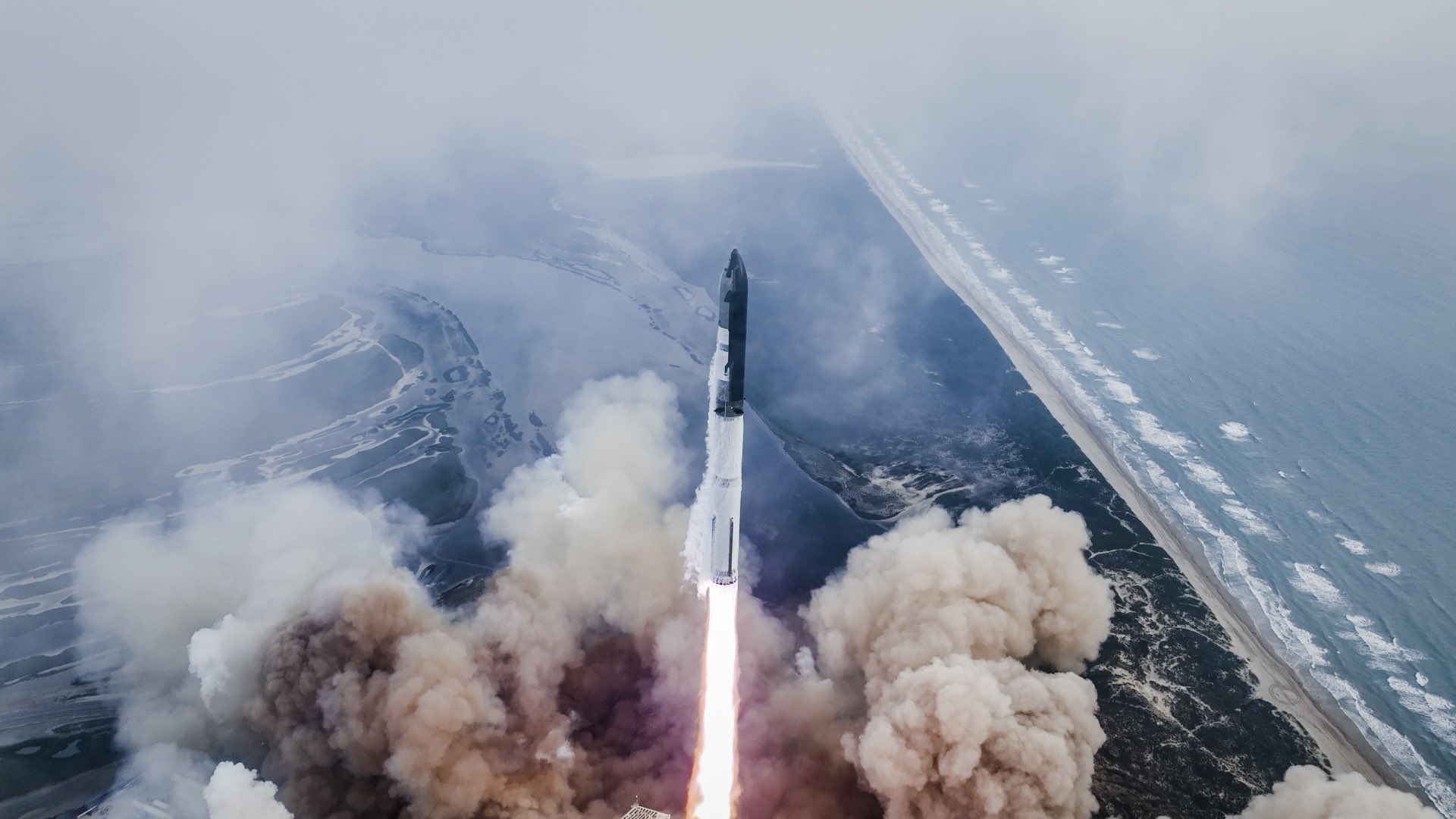
SpaceX’s Starship megastar, the world’s largest and most powerful rocket, reached orbital velocity for the first time on Thursday during its historic third test flight from South Texas.
Watch Starship’s third flight test → https://t.co/bJFjLCiTbK https://t.co/1u46r769Vp
– SpaceX (@SpaceX) March 14, 2024
Hundreds of spectators, rocket launch enthusiasts and SpaceX fans gathered to watch the launch. The original broadcast on Elon Musk’s social network X (Twatter) gathered almost 4 million viewers.
SpaceX’s massive Starship rocket launched on the morning of March 14 at 9:25 a.m. EDT (13:25 GMT) from the company’s production and test launch facilities near Boca Chica Beach.
“The starship has reached orbital velocity,” SpaceX founder Elon Musk announced on his page on the X social network (formerly Twitter) after the launch.“Congratulations to the SpaceX team!!!” The launch took place on the 22nd anniversary of SpaceX’s founding in 2002, the company said.
By the way, neither the Starship nor its super-heavy launch vehicle made it to the planned landing, but SpaceX representatives said that several key goals were achieved during the test flight.
What is noteworthy is that, unlike the previous two launches, which you can see here and here, this time all engines, both the first and second stages, worked properly during the first stage of the flight. Not a single engine shut down. Starship has entered the planned orbit.
The problems began with the launch of both rockets. Initially, the Super Heavy rocket probably crumbled in the lower atmosphere during descent. Further, after completing the planned program in space, the Starship did not turn on its engines for braking and most likely burned up in the atmosphere. But, remarkably, the video broadcast did not stop when the Starship entered the Earth’s atmosphere, showing us stunning and probably unique footage of plasma and the ship’s heating from friction in the upper atmosphere.
“This flight has barely begun, but we’re further than ever before,” SpaceX spokesman Dan Huot said on live TV immediately after the takeoff.“We have a starship that’s not just in space, it’s on its way to space.”
This launch, called Integrated Flight Test-3 (IFT-3), was the third test mission for the fully equipped Super Heavy + Starship. The first and second launches of Starship last year ended explosively: the ships exploded before completing the tasks of each flight. However, the data collected during the first flights helped SpaceX engineers prepare Starship for future success. And this success is already visible.
The improvements made between IFT-1 and IFT-2 last year included the introduction of “hot launch” technology, in which the upper stage engines start working before the Starship’s first stage booster, known as Super Heavy, is fully separated from the launch vehicle. The “hot withdrawal” maneuver IFT-2 was a success.
High in the sky, the Starship’s two stages separated about 2 minutes and 45 seconds after liftoff, sending the 165-foot (50 m) tall upper stage spacecraft into space, while the Super Heavy began preparations to ignite its engines to change its flight path. This ignition did not change the speed of the Super Heavy much and was supposed to take place a few minutes before landing over the Gulf of Mexico. However, it appears that the Super Heavy engines did not ignite as planned, resulting in the loss of the booster.
“Not all the engines fired as we expected, and we lost the booster,” Huot said.“Obviously, we’ll have to analyze the data to find out exactly what happened.”
The Starship is designed to be fully reusable, and SpaceX plans to land and restart its super-heavy boosters as it does with its Falcon 9 rockets.
The Starship upper stage continued to fly after separation, but did not attempt to enter full orbit. Instead, the spacecraft entered the suborbital phase, during which SpaceX hoped to demonstrate two spacecraft flight systems to qualify the vehicle – re-launching the Raptor Starship’s engines and transferring cryogenic fuel between tanks. After these demonstrations, the spacecraft was expected to crash in the Indian Ocean about 65 minutes after launch, but SpaceX lost contact with the ship during reentry.
Rapid progress is essential for Starship, which is at a critical stage of NASA’s Artemis 3 mission. This project aims to land the first humans on the moon after the end of the Apollo era in the early 1970s. The launch of Artemis 3 is currently scheduled for 2026, giving Starship less than two years to meet NASA’s requirements for landing astronauts on the lunar surface.
As you can see, SpaceX is in a hurry to complete the Starship and start commercial flights into orbit. First, SpaceX itself needs it to launch a large number of satellites, including Starlink, into orbit at a time. Secondly, for flights to the Moon and, in the future, to Mars.

